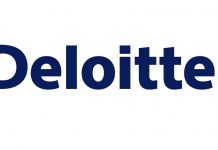One question at a Hong Kong blockchain conference yesterday shook up perspectives of R3’s ambitious plan with 42 major banks to develop blockchain technology for the global financial sector. The questions was simply “Where is China?”.
The conference was Fintech Worldwide’s “Blockchain Conference in Hong Kong“, co-produced with international law firm Simmons & Simmons.
One attendee told the “Blockchain for Financial Services” panel that “China is absent from every discussion at R3” about banking blockchain standards, and asked for panelists opinion on the matter. No one at the conference could really provide an answer. For that matter, why weren’t banks from China, Russia, India, and the developing world part of the “global” R3 consortium?
The banks that have joined R3 thus far include: Banco Santander, Bank of America, Barclays, BBVA, BMO Financial Group, BNP Paribas, BNY Mellon, CIBC, Commonwealth Bank of Australia, Citi, Commerzbank, Credit Suisse, Danske Bank, Deutsche Bank, J.P. Morgan, Goldman Sachs, HSBC, ING Bank, Intesa Sanpaolo, Macquarie Bank, Mitsubishi UFJ Financial Group, Mizuho Financial Group, Morgan Stanley, National Australia Bank, Natixis, Nomura, Nordea, Northern Trust, OP Financial Group, Scotiabank, State Street, Sumitomo Mitsui Banking Corporation, Royal Bank of Canada, Royal Bank of Scotland, SEB, Societe Generale, Toronto-Dominion Bank, UBS, UniCredit, U.S. Bancorp, Wells Fargo and Westpac Banking Corporation.
Obviously, other banks can join the consortium but it is striking that thus far only banks from the following countries or areas have joined: USA, Canada, UK, France, Germany, Netherlands, Italy, Spain, Switzerland, Scandinavia, Australia and Japan. Only the West and Japan? Surely, distributed ledger technology would best serve developing countries, where there are large populations of unbanked and where banking is cost prohibitive.
The event’s organizer, Luis Carvanza, indicated that each of the member banks had to pay US$50,000 per month just to be in the R3 consortium. While that might seem hefty, it should not be deterring banks from China, Russia, India, Brazil, and many other countries.
Interestingly, while R3 revealed it had successfully tested 11 banks on a private blockchain yesterday, China’s central bank, the People’s Bank of China (PBOC), revealed plans to launch its own digital currency to reduce the cost of circulating paper currency. The PBOC’s direction is significant as the state still owns China’s banking industry.
After its digital currency conference yesterday, the PBOC issued the following statement translated by staff from Hong Kong bitcoin exchange BitMex:
Discovering the potential of digital currencies issuance by PBOC implies great historical meaning and is realistic steps that we should take. Issuing digital currencies instead of paper money could reduce cost on issuance and circulation, increase the efficiency and transparency of money circulation, reducing chances of money laundering and tax evading, increase the controliability of money supply by central bank to better support the development of our country. In the future, we see that the issuance of digital currencies and establishing circulation channels could further improve our country’s financial service standard. Further improving the payment and settlement system of our country thus increasing the quality and efficiency of our economic system.
On the face of it, it appears that China’s central bankers do not understand the full benefits of blockchain technology, namely decentralization, distribution and disintermediation. As Anson Zeall, a CoinPip Co-founder, noted in yesterday’s conference: “The Blockchain is a tech, not a currency.” Or is it that they fear that joining a global blockchain technology consortium will undermine Beijing’s preference for centralized control?
For blockchain tech, some obviously believe in the Field of Dreams maxim, “If you build it, they will come.” Alex Medana, the CEO of WIP Solutions, opined at the conference that there was significant movement by individual banks and the entire market to blockchain or distributed ledger technology. He believes that in ten years time most financial services will be on “a blockchain.”







